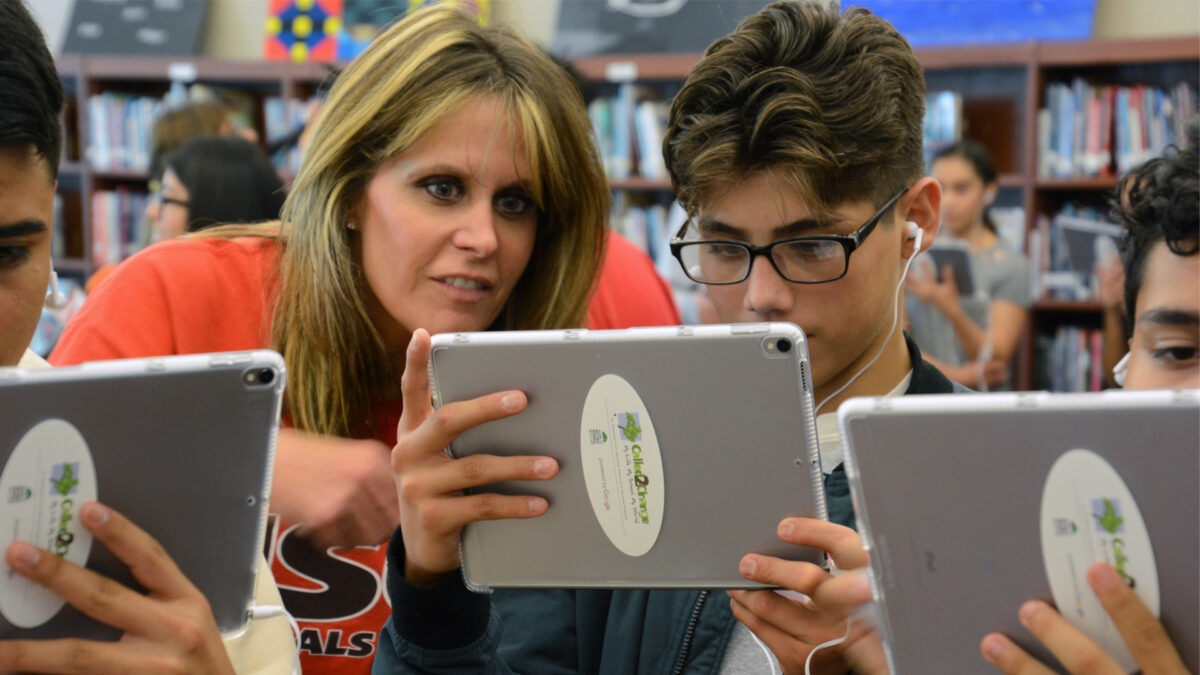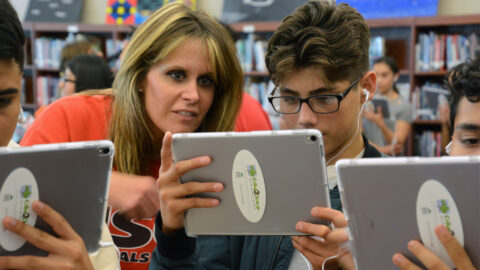Lesson Plan
Sacred Ground: Symbolism & Physical Space
When visited by senseless violence, communities band together. We create memorials, harness the power of symbolism, and do what we can to honor those we’ve lost. For these efforts, we reclaim the spaces which have become sacred in the wake of tragedy. Objects in these spaces are imbued with new and profound meaning, and we work to preserve and maintain them. The Oklahoma City Outdoor Memorial and the Survivor Tree are examples of this work and those objects. The work of remembrance and the care we put into the Survivor Tree unites us with communities all over the world, as the symbolic power of trees is harnessed by many tragedy-stricken communities to acknowledge and maintain the sacredness of their spaces.
Lesson Summary
Through the study of the Oklahoma City Survivor Tree and others, students will learn about the connection between symbolism and sacred space. Students will create their own symbolic trees and hang them around the room to learn how objects can add meaning to physical space. Finally, students will engage in research on one of the following trees and give a presentation on how each tree adds meaning to the physical space it occupies.
- American Elm: Oklahoma City Survivor Tree
- Callery Pear: 9/11 Survivor Tree
- Hibaku Jumoku: The Trees that Survived Hiroshima
- Miracle Pine: Lone survivor of 2011 Japanese Tsunami
Essential Questions
- How do symbols function not only in literature, but in everyday life?
- How can symbols add meaning to a physical space?
Time frame: 2 class periods
Subject(s): Social Studies, World History, Oklahoma History, English
Materials:
- Computer or Tablet with Internet Access
- Craft Supplies
Day 1
- Divide students into four groups, as each activity in this lesson will involve group discussion or collaborative work.
- (~20 mins) In their groups, have students each individually come up with a list of four characteristics, traits, or values that are important to them. Pass out or display on screen the list of traits and values to get them started. After they have created their list, have each person use craft supplies to draw or create a tree (or flower, shrub, etc.) that represents themselves and the four traits they have chosen. Allow them to look at images of trees and plants online for inspiration. Have them label parts of their trees with the different traits or values they represent. When they’re finished, have group members present their trees to each other, explaining the traits and values they chose and the way their tree symbolizes them.
Teacher Note: This activity can be completed digitally, with students creating their trees on a program like Google Slides or Canva. However, given this lesson’s focus on symbolism and physical space, the display of the trees around the classroom (see next section) is crucial to addressing Essential Question 2. So, if possible, stick to the creation of physical trees. - (~8 mins) After they’ve shared with their groups, have students hang their trees on the walls in the classroom and give students a chance to walk around the room to view their classmates’ trees.
Teacher Note: If you chose the digital option, have each student add the image of their tree to a collaborative Google Slideshow and give them time to explore each slide. - (~10 mins) After students have viewed their classmates’ trees, initiate a class discussion using the following reflection questions.
a. What was it like to try and create something that represented yourself and then to share that with a group?
b. How did seeing the trees that others chose and created help you understand or know them better? Did you learn something about a fellow classmate that you didn’t know?
c. What can symbolism teach us about what we have in common with each other, especially with those we might think of as different than us? - Leave the trees up after class has ended
Day 2
- Place students into the same groups from the previous day.
Teacher Note: If trees were created digitally, have the collaborative slideshow on loop as students enter the classroom. - (~8 mins) Begin class by having students discuss the following questions in groups:
a. What was it like walking into class today and seeing the symbolic trees we made yesterday hung on the walls?
b. What happened to the classroom after we hung up our trees? In displaying symbols which represent us and our values, how did our space change?
c. How do symbolic objects add meaning to a space? What does it mean for a space to become sacred? - (~5 mins) After students have discussed in groups, encourage groups to share with the class the answers they generated.
- (~8 mins) As a class, watch the sections of the Outdoor Symbolic Memorial Walking Tour Video on the Survivor Tree (2:22 – 3:51) and the Rescuer’s Orchard (13:51 – 15:19). Have students take notes as they watch on all the ways symbolism adds meaning to the space of the Outdoor Memorial, then discuss their notes in their groups.
- (~15 mins) Assign each group one of the trees below:
• American Elm: Oklahoma City Survivor Tree
• Callery Pear: 9/11 Survivor Tree
• Hibaku Jumoku: The Trees that Survived Hiroshima
• Miracle Pine: Lone survivor of 2011 Japanese TsunamiDirect groups to use their devices to conduct research on their assigned tree, preparing a slideshow presentation which addresses the following questions:
A. With what major historical event is this tree (or groups of trees) associated?
B. How does this tree commemorate that event?
C. In what ways did the community band together to honor and protect the tree?
D. What does the tree symbolize?
E. How does the tree add meaning and sacredness to the space that it occupies? - (~15 mins) Group presentations
Oklahoma History
OKH.6.7 Analyze the causes and effects of the domestic terrorist attack on the Murrah Federal Building in Oklahoma City including the responses of Oklahomans to the act, concept of the “Oklahoma Standard” and the creation of the Oklahoma City National Memorial and Museum.
English
10.3.R.4 Students will evaluate how literary devices impact theme, mood, and/or tone, using textual evidence:
- figurative language (i.e., simile, metaphor, personification, hyperbole, imagery, symbolism)
- sound devices (i.e., onomatopoeia, alliteration, assonance)
- irony (i.e., verbal, situational, dramatic



